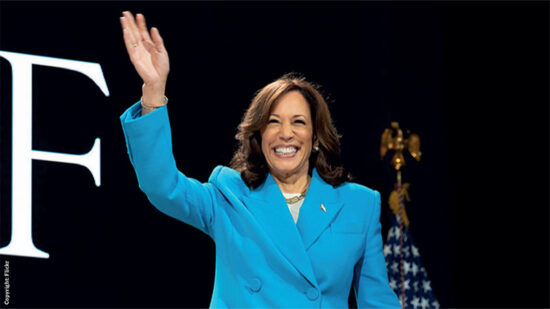Bill O’Neill, portfolio strategist at Merrill Lynch Global Wealth Management, asseses the impact of a gilt downgrade on the UK economy and investment markets
Little in the way of new evidence with respect to the pace and breath of any global recovery, emerged last week. First pointers to European business confidence for May hint at a rapidly fading pace of contraction, with Germany in the forefront of the rebound. The manufacturing version of the purchasing managers’ index covering the eurozone jumped to 40.5 from 36.8 in April.
In reality though, while the readings on expectations predict an end to recession, the view on current conditions is still very negative, suggesting actual expansion is many months away. This message applies to recent US regional industrial readings as well.
Markets were left with the scope to dwell on public policy and the ramifications of the extremely loose fiscal and monetary settings put into place in the last eighteen months to head off a prolonged slump.
Dour outlook for US
Federal Open Market Committee minutes for the 28-29 April policy meeting were not quite as optimistic on recovery as some subsequent commentary might have suggested.
The economic forecasts, released in conjunction with the minutes, also reflected a dour outlook as the estimates showed slower growth in 2009 and less of a rebound in 2010.
Fed participants also continued to see, "significant downside risks to the economic outlook".
Furthermore, some members noted: "further increase in the total amount of purchase might well be warranted at some point to spur a more rapid pace of recovery", giving the lie to the notion that emergency policy measures would soon end.
Concerns about the sustainability of the current pace of public borrowing, in conjunction with the very low yields on offer, were crystallised by the surprising announcement on the rating of UK public debt by Standard and Poors (S&P).
Risk of downgrade growing
While it was confirmed at AAA, the outlook was moved from stable to negative, with risk of a downgrade post the forthcoming general election. There is certainly a sense that S&P is disappointed at the pace at which the rise in public debt is being addressed.
We reviewed some of the numbers to remind ourselves what the fuss is about.
The major concern is, of course, the sheer volume of new gilts that will have to be issued to plug the gap in the budget shortfall over the coming years. To warrant a credit downgrade, these issuances will have to persist over a period of time.
For the immediate future of the gilt market, the speed at which the numbers have deteriorated is perhaps the bigger concern, as opposed to the trajectory of public finances over the next four to five years.
So much for the ostensibly obvious supply implications for the UK gilt market. From the point of view of fiscal policy, the next election indeed looks like a poisoned chalice.
Public spending cuts
Given the structural nature of much of the fiscal deficit, the need for sustainability in public accounts shines the spotlight on possible, serious spending cuts. The damage done will not be healed by a simple cyclical correction.
Deep cuts in public spending will probably be required to bring public finances on an even keel once again. While timing is always a difficult thing to get right, it would appear as if the forces in favour of a UK gilt curve steepening are gathering apace.
No wonder then that the ratings agencies have taken note of developments and ushered in a warning. For domestic holders of gilts the actual rating of the bonds is perhaps somewhat academic, but foreign holders may take a different view.
Lessons from Japan
The best example of a country drifting lower in ratings in an environment of a sharp downturn and quantitative easing is Japan. Japan’s budget deficit to GDP also floated past the 10% per annum level.
There, the rating downgrade did not have too detrimental an effect on bond yields. There was one important factor though: the Japanese post office savings bank became the biggest holder of Japanese Government Bonds.
This raises a very interesting question: will the UK have a similar “buyer of last resort”? This is a remote possibility at this stage, but not one that can be totally ruled out in an environment where the government has taken a far more direct interest in the running of financial institutions.
Surprisingly, sterling first saw a sharp retreat to US$1.55 in reaction to the news, before recovering strongly against a pervasively weak dollar.
The bulls on the pound do consider the move by S&P as ‘old news’, which has already forced a dramatic 25% decline in sterling’s trade weighted index since November 2007.
In essence, they see the dynamics influencing sterling now largely driven by the likely success of the quantitative easing policy being operated by the Bank of England, and the prospect that, if it does work, the base rate will rise sooner than many expect.
None of this hope can be gleaned from the minutes of the last Monetary Policy Committee meeting, released last week, where the clear message was that the risk of doing too little was far greater than doing too much.
Carry trade beneficiary
Certainly, some in the forex market feel that if the carry trade theme re-emerges (go short low interest rate currencies and long higher rate currencies), sterling will be an early beneficiary across G7 currencies.
Improved liquidity within international markets, seen in narrower bid-ask spreads, should also advantage sterling. Such confidence was giving a fillip last week as implied volatility in currency markets fell sharply. Short term, sterling can still appreciate against the dollar.
However, sterling cannot rely on yield support alone in the medium term. As better than expected UK retail sales data last week clearly demonstrate, the public purse has largely absorbed the pressure of the global economic crisis.
Retail sales rose 0.9% on the month and were ahead 2.6% over a year earlier. Once taxes start to rise to address the need to reduce government borrowing, consumption will be further constrained in 2010.
Given weak external markets, soft asset prices and a slump in business investment (tellingly ignored by the market when revealed in data last week), a persistently weak exchange rate will have to be part of the ingredients in rebalancing the economy toward stronger net exports.
The 1992-95 adjustment under Norman Lamont as Chancellor would seem the most appropriate precedent, a distinction relative to Japan.
Meanwhile, Banc of America Merrill Lynch Research see fair value for sterling-dollar at $1.47, so its correction back from undervaluation late last year has now overrun itself. There is still scope for sterling to rally against the euro, especially if the European Central Bank expands on its tentative steps to buy very high grade credit.








